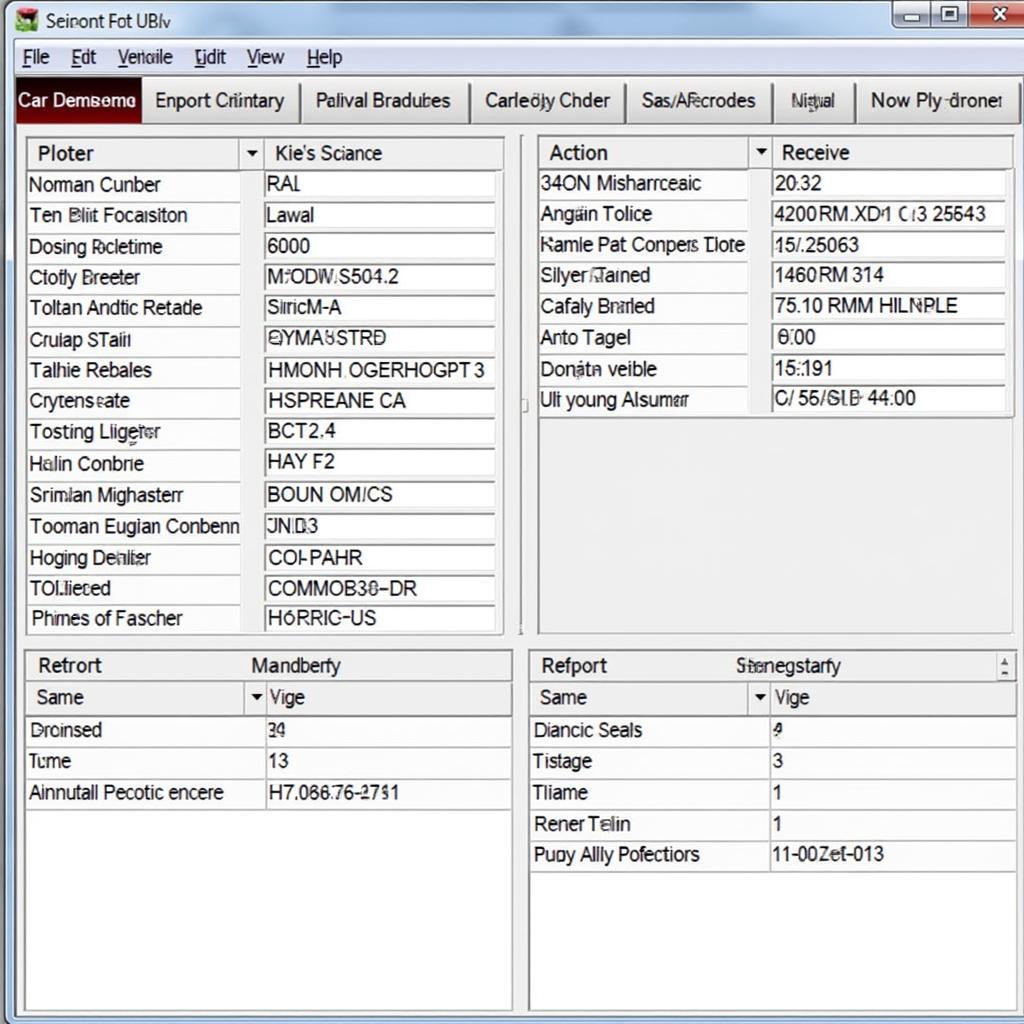Understanding the health of your car doesn’t require a mechanic’s stethoscope. Instead, modern vehicles speak through diagnostic codes, offering insights into potential issues. But how do you access this information? This guide will walk you through the process of running a diagnostic on your car, demystifying the jargon and empowering you with knowledge.
What is a Car Diagnostic Test?
Essentially, a car diagnostic test is a procedure where a specialized tool, known as an OBD2 scanner, connects to your car’s computer system (your car’s brain, so to speak). This scanner retrieves diagnostic trouble codes (DTCs) stored within the system, which are like digital breadcrumbs left by your car, indicating areas that might need attention.
Why Would You Need to Run a Diagnostic?
There are various scenarios where running a diagnostic proves beneficial:
- Check Engine Light Illumination: This is often the first sign prompting a diagnostic test.
- Performance Issues: Experiencing rough idling, reduced fuel efficiency, or strange noises? A diagnostic can pinpoint the root cause.
- Pre-Purchase Inspection: Before buying a used car, a diagnostic can unveil hidden problems.
- Preventative Maintenance: Periodic diagnostics can catch issues early on, preventing costly repairs later.
What Will a Diagnostic Test Tell You?
A diagnostic test can reveal a wealth of information about your car’s health, including:
- Engine Performance: Identifying issues with ignition timing, fuel injection, and emissions systems.
- Transmission Status: Detecting problems with gear shifting, clutch performance, and torque converter operation.
- Brake System: Identifying faults in ABS, traction control, and other brake components.
- Airbag System: Detecting issues with airbag sensors, modules, or deployment systems.
 Car Diagnostic with OBD2 Scanner
Car Diagnostic with OBD2 Scanner
How Do I Run a Diagnostic on My Car?
While the specifics might vary slightly between car models, the general process remains relatively consistent:
- Locate the OBD2 Port: This port, typically found under the dashboard on the driver’s side, resembles a trapezoid with a 16-pin connector.
- Connect the OBD2 Scanner: Plug the scanner into the port.
- Turn on the Ignition: Turn the key to the “on” position without starting the engine.
- Read the Codes: The scanner will display any stored DTCs. Note these codes down.
 Mechanic Reading Diagnostic Codes
Mechanic Reading Diagnostic Codes
What Do the Diagnostic Codes Mean?
Diagnostic codes are alphanumeric combinations starting with a letter and followed by four numbers. Each code corresponds to a specific issue within a particular system.
For example:
- P0301: Indicates a misfire in cylinder 1.
- P0420: Suggests a problem with the catalytic converter.
- U0100: Points towards a loss of communication with the engine control module (ECM).
Where Can I Find the Meaning of the Codes?
- OBD2 Code Lookup Tools: Numerous websites and apps offer free code definitions.
- Vehicle Owner’s Manual: Your manual might have a section dedicated to diagnostic codes.
Can I Fix the Problem Myself?
While some issues might be simple fixes, others require professional expertise. If you’re unsure, it’s best to consult a qualified mechanic, especially for complex problems or if you lack the necessary tools and experience.
 Car Diagnostic Report
Car Diagnostic Report
How Much Does a Diagnostic Test Cost?
The cost of a diagnostic test can vary depending on several factors, including:
- Location: Labor costs can differ significantly between regions.
- Service Provider: Dealerships often charge more than independent mechanics.
- Type of Scanner: Professional-grade scanners used by mechanics are more expensive, impacting the overall cost.
Don’t Ignore the Warning Signs
Your car speaks to you through various indicators. Ignoring these signs can lead to more severe problems down the line. Running a diagnostic is like having a conversation with your car, understanding its language, and addressing its needs promptly.
FAQs
1. How often should I run a diagnostic on my car?
It’s generally recommended to run a diagnostic at least once a year or whenever you notice unusual behavior in your car.
2. Can a bad battery cause false diagnostic codes?
Yes, a weak or failing battery can sometimes trigger false codes. It’s always a good idea to ensure your battery is in good condition before running a diagnostic.
3. Will clearing the codes solve the problem?
Clearing codes only erases the stored information but doesn’t fix the underlying issue. If the problem persists, the codes will reappear.
4. Can I use any OBD2 scanner for my car?
While most scanners work universally, it’s essential to choose one compatible with your car’s make, model, and year.
5. Is it worth investing in my own OBD2 scanner?
For car enthusiasts or those comfortable with basic car maintenance, owning a scanner can be beneficial for monitoring car health and catching issues early on.
For more detailed information on running diagnostic tests:
Remember, understanding your car’s diagnostics empowers you to address issues proactively, keeping your car running smoothly and potentially saving you from hefty repair bills in the long run. For any further assistance, contact our 24/7 customer support team through WhatsApp: +1(641)206-8880, Email: [email protected]. We are here to help.

Leave a Reply